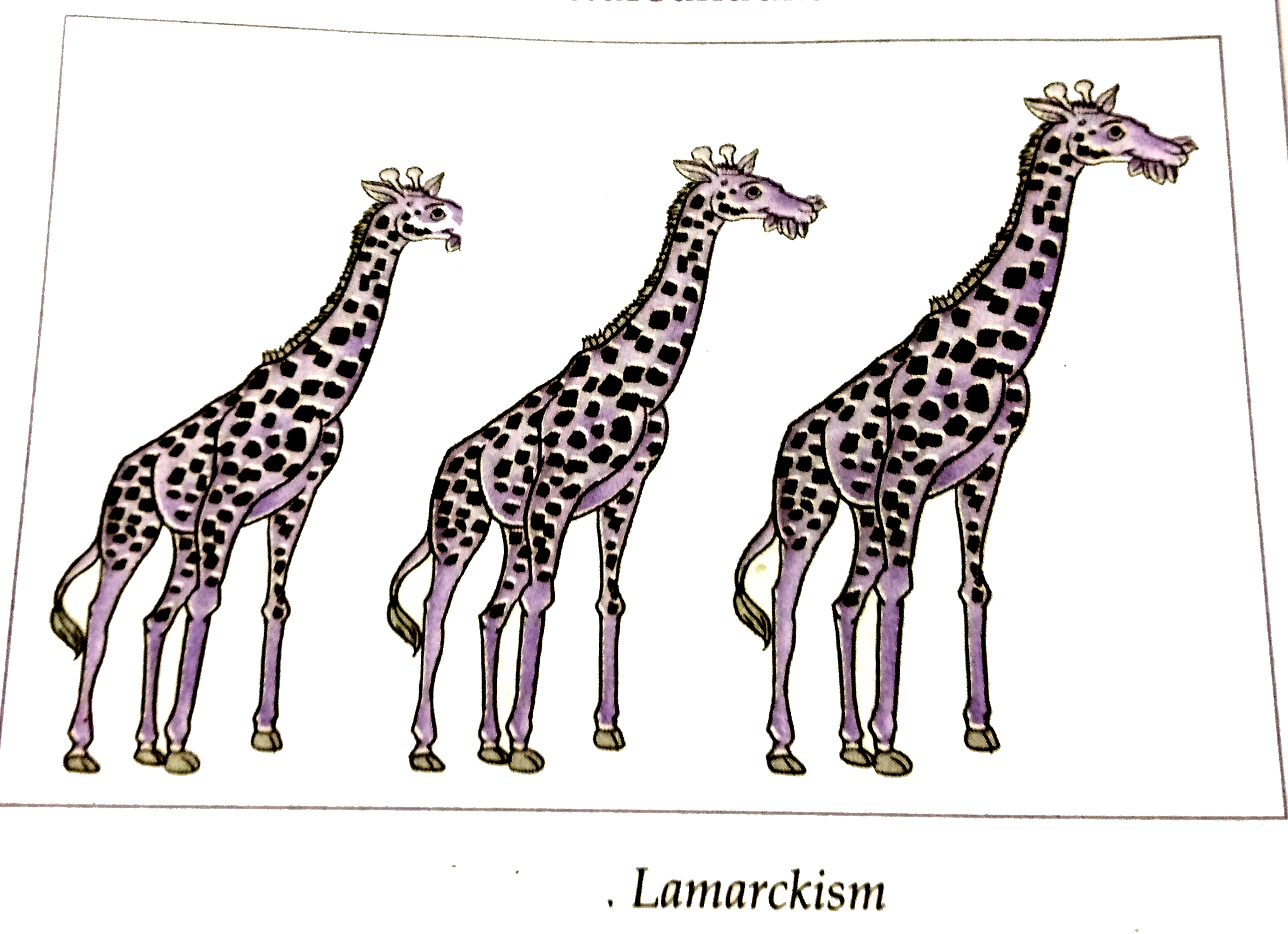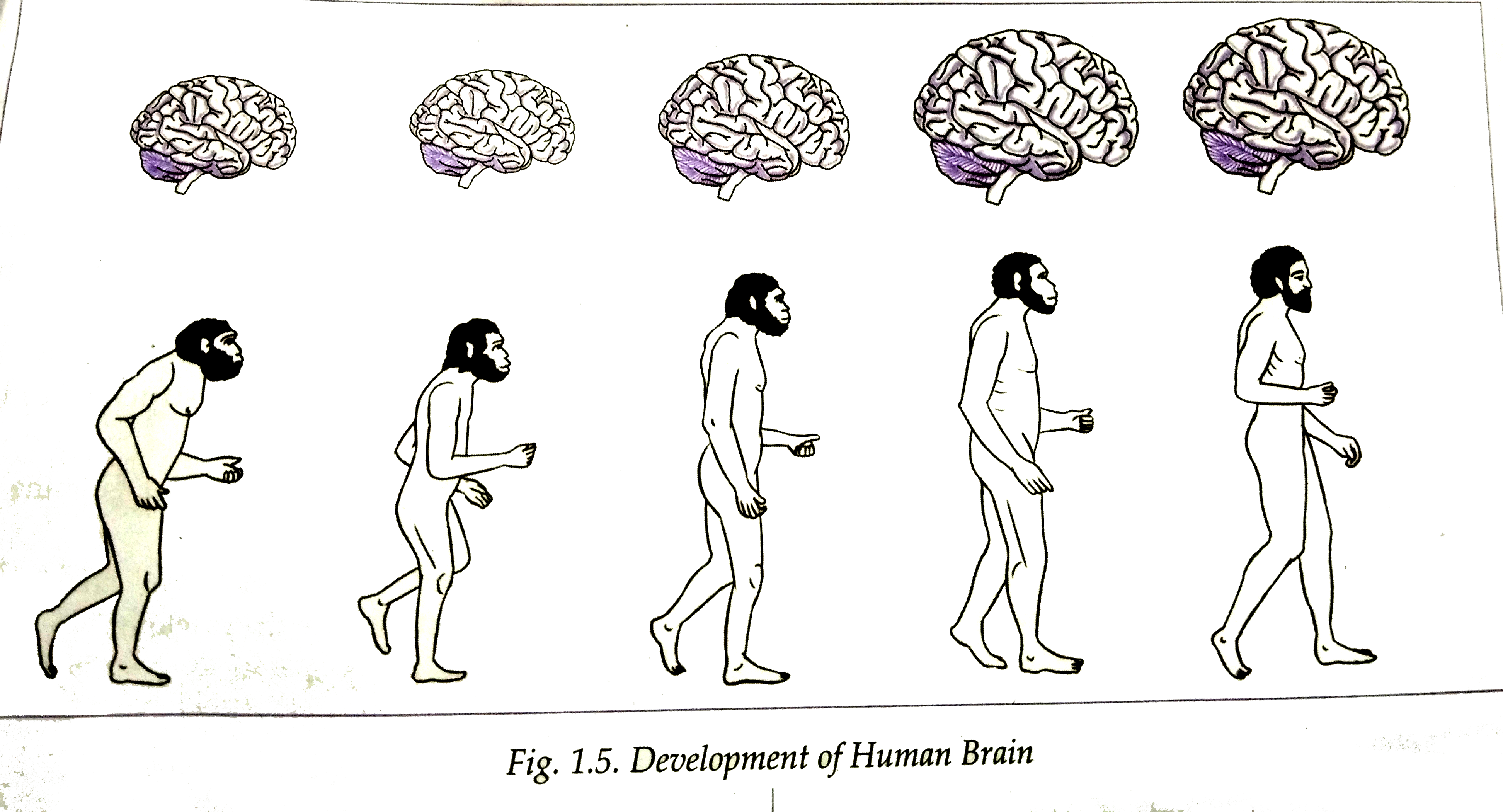Explain the theory of evolution and mention the proof supporting it. Solution in Tamil
(i) According to the theory of evolution, first living material (protoplasm) has been formed in ocean.
(ii) In due course of time, unicellular organism was formed.
(iii) Gradually, changes occurred in the unicellular organism from which larger and more complex organisms were formed. ltbr (iv) All those changes were slow and gradual. Duration of all these changes is about 300 crore years.
(v) Changes and development in living organisms has been all round and multi-dimensional and this led to evolution of different types of organisms.
(vi) Hence, this overall process is called as evolution which is organizational.
(vii) Progressive development of plants and animals from the ancestors having different structural and functional organization is called evolution.
(viii) To support the theroy of evolution, various types of evidence are available.
(ix) Inspite of many adaptive differences in protoplasm and cell, the manifestation of life processes like growth, reproduction, metabolism are essentially same in all organisms.
(x) Morphological evidence support the theory. It is seen that all plants have stem, root, leaf and are green in colour and those having green colour carry out photosynthesis. Similarly, it is seen that animals have appendages, eyes, nose, ears, etc.
(xi) Anatomical evidences like the bone structure of a human arm, a bulls leg, a bat's wing and a whale fin have similar structures attributing that they have developed from common ancestors.
(xii) Vestigial organs like tail ond or coccyx present in humans indicate the link between humans who have lost a tail and monkeys who have a tail.
(xiii) At embryological level, similarities are observed during initial stage which indicates common origin.
(xiv) Thus, there are few evidences which support the fact that evolution in sequential.
Topper's Solved these Questions
- HEREDITY AND EVOLUTION Book:CHETAN PUBLICATIONChapter:HEREDITY AND EVOLUTION Exercise:Observe the picture and answer the questions:
Explore 2 Videos
- HEREDITY AND EVOLUTION Book:CHETAN PUBLICATIONChapter:HEREDITY AND EVOLUTION Exercise:ASSIGNMENT-1
Explore 12 Videos
- HEREDITY AND EVOLUTION Book:CHETAN PUBLICATIONChapter:HEREDITY AND EVOLUTION Exercise:Observe the figure and answer the questions given below:
Explore 3 Videos
- ENVIRONMENTAL MANAGEMENTBook:CHETAN PUBLICATIONChapter:ENVIRONMENTAL MANAGEMENTExercise:ASSIGNMENT-4
Explore 5 Videos
- INTRODUCTION TO MICROBIOLOGY Book:CHETAN PUBLICATIONChapter:INTRODUCTION TO MICROBIOLOGY Exercise:Assignment - 7
Explore 12 Videos
Similar Questions

(a) The picture depicts a theory of use or disuse of organs. Name it.
(b) Name the scientist who proposed it.
( c) Give one example and explain the theory with its help.
Why was this theory disproved?
View SolutionFill in the blanks.
(a) The code for each amino acid consist of three nucleotides called…………………
(b) Darwin had published a book titled………………
View Solution
(a) What is the picture about?
(b) What does the picture of the last man indicate to us and what was he called?
(c ) How did the change happen from first man to the last man as shown in the figure?
View SolutionFill in the blanks: The World Biodiversity Day is …………..
View SolutionAcetic acid is bleached with the help of ……….
View Solutionvon Bear supports the theory of evolution on the basis of
View SolutionExplain the theory of evolution and mention the proof supporting it.
View SolutionExplain the theory of evolution and mention the proof suporting it.
View SolutionDefine fossil. Explain importance of fossils as proof of evolution.
View SolutionEmbryological evidences provide proof of evolution. Explain.
View SolutionExplain the theory of evolution and mention the proof supporting it.
View SolutionDefine fossil. Explain imortance of fossils as proof of evolution.
View SolutionDefine fossil. Explain importance of fossils as proof of evolution.
View SolutionExperimental proof of theory of chemical evolution of life was given by
View SolutionExplain the theory of chemical evolution.
View Solution